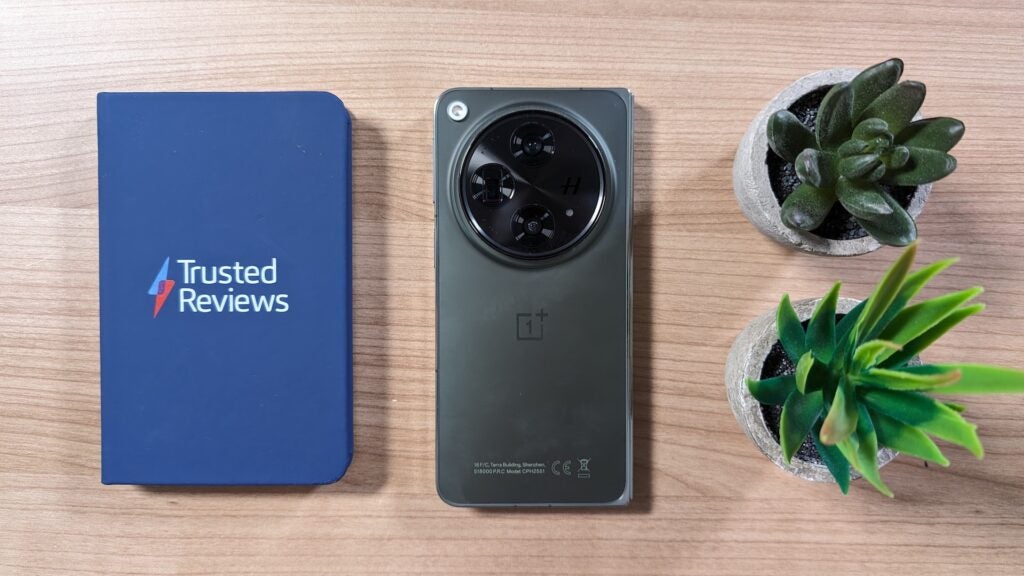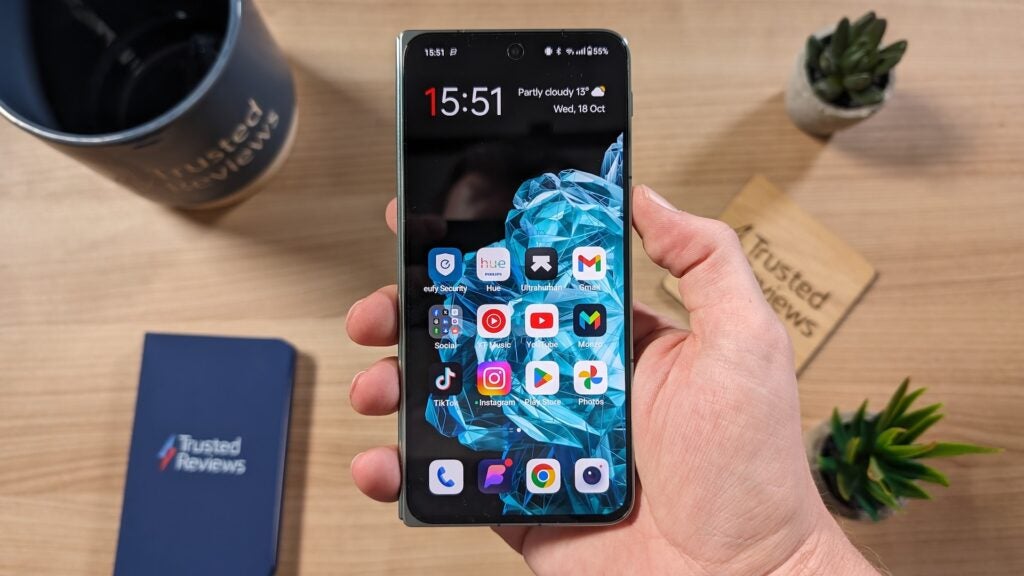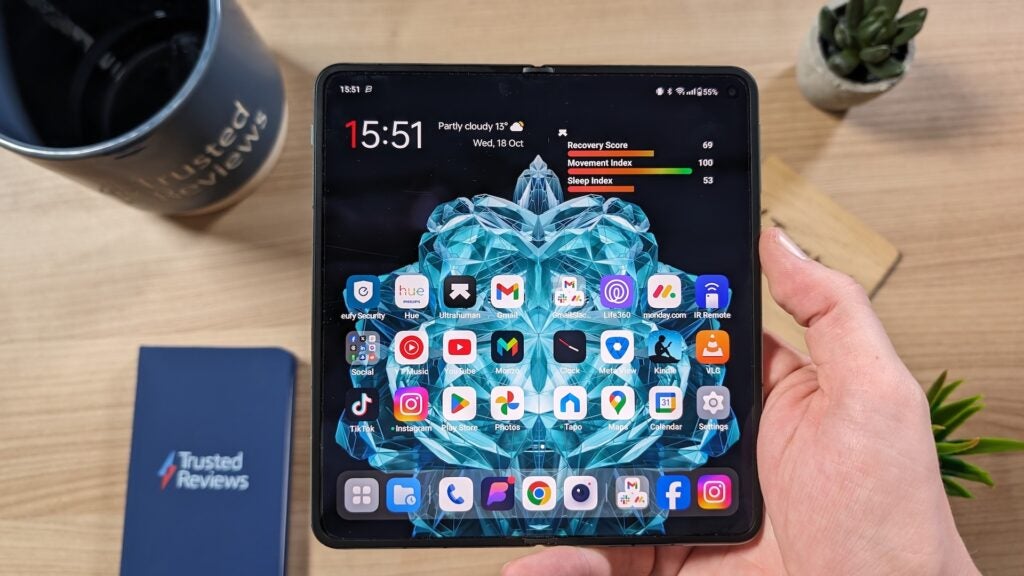OPINION: I was well and truly smitten with the OnePlus Open during my review period in early October, praising its combination of genuinely impressive foldable hardware and a new approach to multitasking on a book-style foldable – so much so that it garnered a near-perfect 4.5-star rating in my review.
It’s at this point that I usually take my SIM card back out of the review device and put it back into my daily driver or advance onto the next device I am reviewing.
However, even with the review wrapped up, I decided to keep my SIM in the OnePlus Open to see how I’d fare using it long-term – a personal challenge I set to myself with every book-style foldable I review, as up until now, I find myself boxing them up after an extra week or two.
Why? While the experience has traditionally been fine, none have perfectly scratched the foldable itch I’ve had. There’s always some compromise with foldables, be it camera tech, the annoying central crease on the sizeable inner display or even just the fact that they’re bigger and bulkier than even the chunkiest candy bar phones.
However, even after over two months of daily use, I’m yet to feel that same frustration or limitation with the OnePlus Open. OnePlus (and parent company Oppo) has truly crafted what I believe to be the first book-style foldable without any tangible compromise, and it makes me excited for the future of the form factor.


That starts with an excellent design that, despite not being the absolute thinnest or lightest foldable, is still a huge improvement on what the likes of Samsung and Google have offered with recent book-style foldables admire the Z Fold 5 and Pixel Fold. There’s no gap between the two halves of the phone when folded, it can survive a stint in the rain, and it’s comfortable to use one-handed in its more compact form.
Then there’s the high-end cover display; rather than an awkwardly tall and narrow cover display admire the 6.2-inch screen on the Z Fold 5 or the short-and-squat alternative from the Pixel Fold’s 5.8-inch display, the OnePlus Open’s 6.3-inch screen looks and feels admire a regular smartphone.
In fact, it sports the same 20:9 aspect ratio as the OnePlus 11, giving some familiarity to the overall build.


Crucially, it hasn’t hamstrung the cover display’s specs to force users to opt for the often more capable foldable inner display. That means you’re getting the same high-end experience with an LTPO-powered 120Hz refresh rate, Dolby Vision uphold, and a peak brightness of 2800nits regardless of the display you deduce to use. This, for me, really hammered home the OnePlus Open experience.
In general, the inner display of book-style foldables can be handy for plenty of tasks, but the comparatively boxy aspect ratio means it’s also not ideal for certain activities, be it playing games or watching portrait-style video.
But, with a basic cover display accompanying most foldables, I’d usually have no choice but to force myself to use the inner display most of the time. That’s not the case with the OnePlus Open.
Instead, I feel free to use the two interchangeably depending on which screen best suits the task without feeling admire I was missing out on something. In my case, I was using the cover display for texting, scrolling on Instagram and replying to emails. In contrast, the larger inner display was perfect for browsing websites, reading e-books on the Kindle app and providing a large viewfinder for the phone’s camera.


It may seem odd to someone who hasn’t used a foldable before, but I think long-time Samsung Z Fold fans will truly appreciate what I’m getting at here.
I’m also a massive fan of the OnePlus Open’s camera setup, with three lenses specifically designed for use in foldables – another difference compared to much of the competition.
I won’t rehash my review here, but the performance across the three lenses is consistently impressive. So much so that I haven’t taken any photos over the past few months and instantly thought, ‘Ah, that would’ve been better if I’d taken it on a Pixel or iPhone’. That’s pretty high praise for a foldable.
Of course, admire most book-style foldables, the OnePlus Open is still ridiculously expensive at £1,599. However, now that the hardware aspect has been refined, the company can hopefully work on bringing that price down to something resembling a traditional flagship smartphone. That’s my hope, anyway!

